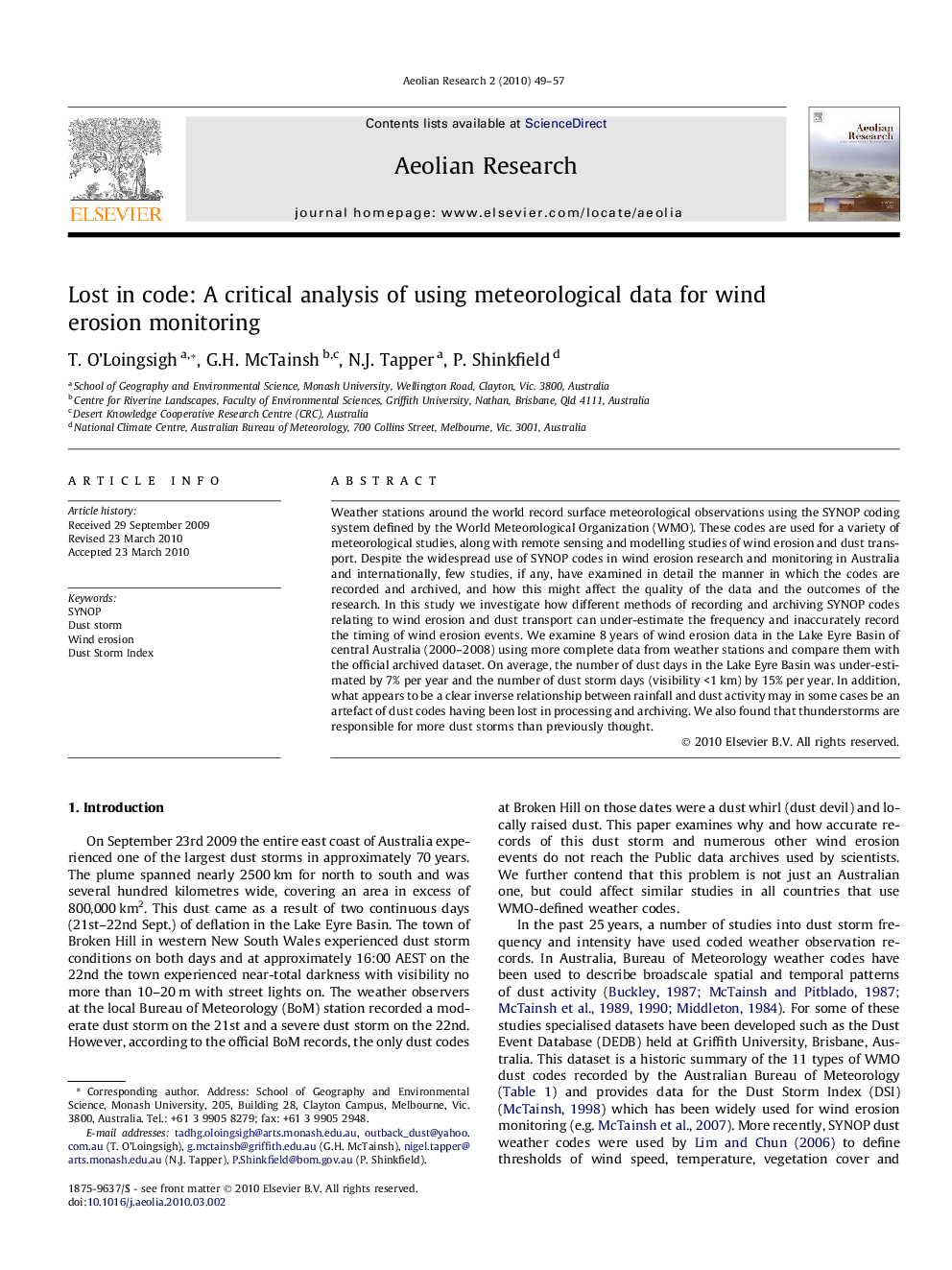| Article ID | Journal | Published Year | Pages | File Type |
|---|---|---|---|---|
| 4673983 | Aeolian Research | 2010 | 9 Pages |
Weather stations around the world record surface meteorological observations using the SYNOP coding system defined by the World Meteorological Organization (WMO). These codes are used for a variety of meteorological studies, along with remote sensing and modelling studies of wind erosion and dust transport. Despite the widespread use of SYNOP codes in wind erosion research and monitoring in Australia and internationally, few studies, if any, have examined in detail the manner in which the codes are recorded and archived, and how this might affect the quality of the data and the outcomes of the research. In this study we investigate how different methods of recording and archiving SYNOP codes relating to wind erosion and dust transport can under-estimate the frequency and inaccurately record the timing of wind erosion events. We examine 8 years of wind erosion data in the Lake Eyre Basin of central Australia (2000–2008) using more complete data from weather stations and compare them with the official archived dataset. On average, the number of dust days in the Lake Eyre Basin was under-estimated by 7% per year and the number of dust storm days (visibility <1 km) by 15% per year. In addition, what appears to be a clear inverse relationship between rainfall and dust activity may in some cases be an artefact of dust codes having been lost in processing and archiving. We also found that thunderstorms are responsible for more dust storms than previously thought.
